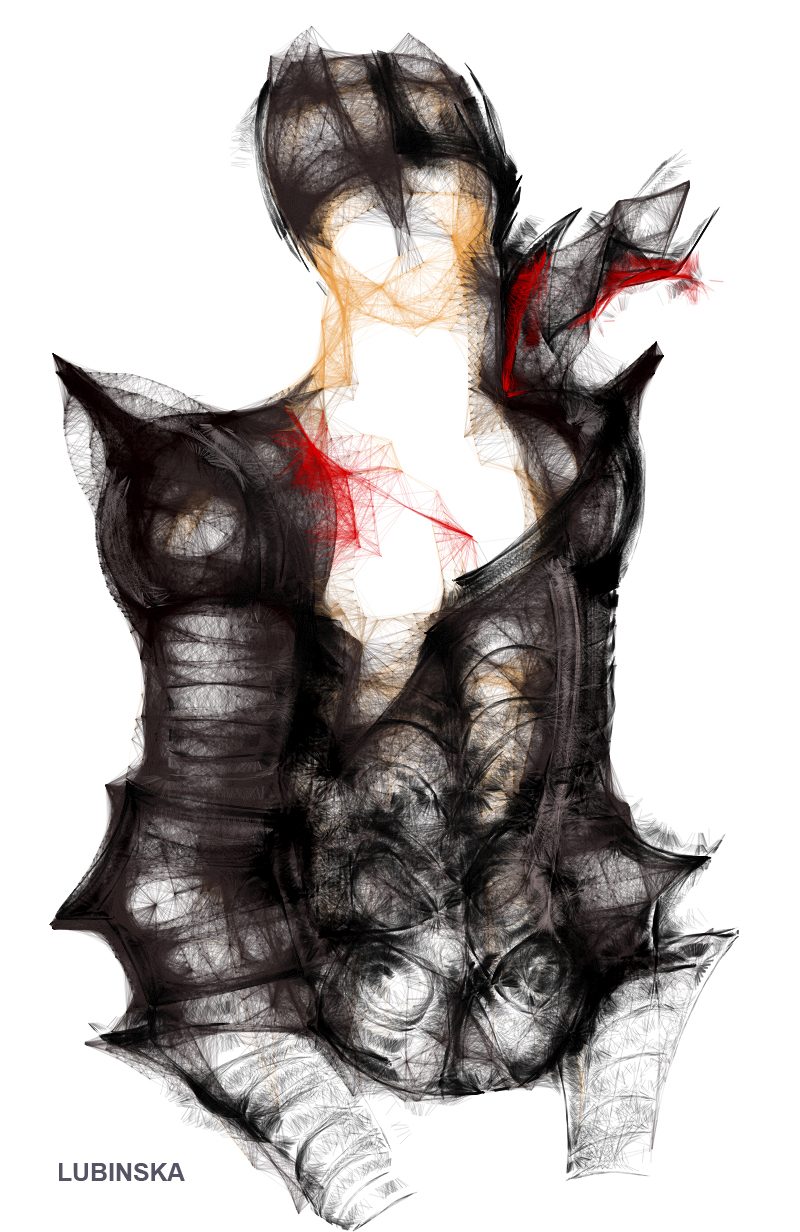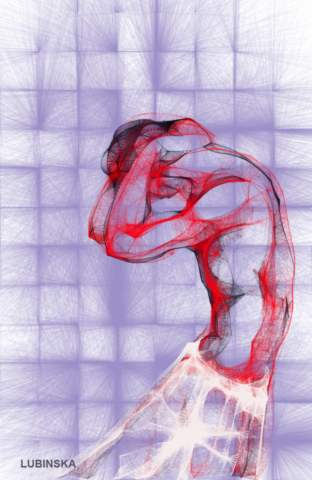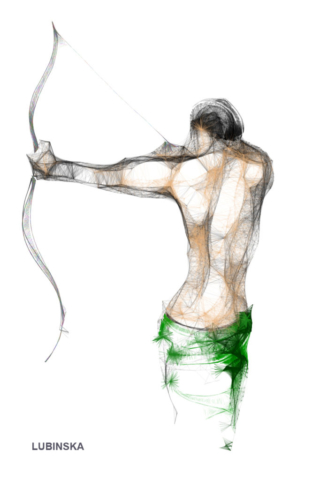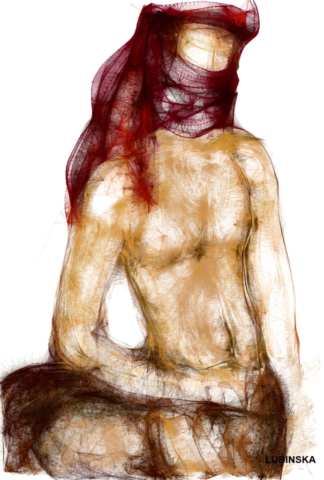
‘’ WOUNDED KNIGHT. St Ignatius of Loyola’’
2012
Multilevel drawing by engineering CADplatform software, pen on paper thermally combined with cardboard
65x100cm
This short moment in a person’s life when the truth is revealed to him.
Created in 2012 as a part of art-project “Tangential Myths” this art-work got new meanings later, then hot merciless war flashed in the middle of Europe again, in Ukraine in 2014. And asked to open again old folders of our understanding how good we learned lessons of history. And still asking each of us how far humans in 21-st century can go followed own ambitions, sins, or pushed by ambitions of others. Since 16th century, when St Ignatius pointed his philosophy, when he became to be a mental help for the same wounded soldiers as he was, how grew up our spirit, how strong doors of our hearts in front of suffering, which our European neighbours having in war until now ? Do we really become separate kingdoms again?
.
And now this drawing sound fresh with a new pain in the war 2022 where Ukraine still stand strong.
.
Ignatius on this drawing: He was the youngest of thirteen children. His mother died soon after his birth, and he was then brought up by María de Garín, the local blacksmith’s wife. Ignatius adopted the surname “de Loyola” in reference to the Basque village of Loyola where he was born. As a young man Ignatius had a great love for military exercises as well as a tremendous desire for fame. He framed his life around the stories the knights of Camelot, and the Song of Roland. He joined the army at seventeen, he strutted about “with his cape slinging open to reveal his tight-fitting hose and boots; a sword and dagger at his waist”. According to another version he was “a fancy dresser, an expert dancer, a womanizer, sensitive to insult, and a rough punkish swordsman who used his privileged status to escape prosecution for violent crimes committed with his priest brother at carnival time.” Upon encountering a Moor who denied the divinity of Jesus, he challenged him to a duel to the death, and ran him through with his sword. He dueled many other men as well. In 1509, at the age of 18, Ignatius took up arms for Antonio Manrique de Lara, Duke of Nájera. His diplomacy and leadership qualities earned him the title “servant of the court”, which made him very useful to the Duke. Under the Duke’s leadership, Ignatius participated in many battles without injury. But at the Battle of Pamplona in 1521 he was gravely injured when a French-Navarrese expedition force stormed the fortress of Pamplona on May 20, 1521. A cannonball hit him. Body was injured but mostly was injured his legs, wounding his right leg and fracturing the left in multiple places. Ignatius was returned to his father’s castle in Loyola, where, in an era that knew nothing of anaesthetics, he underwent several surgical operations. Ignatius would limp for the rest of his life, and his military career was over.
After he had recovered sufficiently to walk again, resolved to begin a pilgrimage to the Holy Land to “kiss the earth where our Lord had walked” and to do stricter penances. He thought that his plan was confirmed by a vision of the Virgin Mary and the infant Jesus he experienced one night, which resulted in much consolation to him. In March 1522, he visited the Benedictine monastery of Santa Maria de Montserrat. There, he carefully examined his past sins and confessed. Ignatius obtained a master’s degree from the University of Paris at the age of forty-three. In the own life-way he became a Spanish Basque priest and theologian, who founded the religious order called the Society of Jesus (Jesuits) and became its first Superior General. The Jesuit order served the Pope as missionaries, and they were bound by a vow of special obedience to the sovereign pontiff in regard to the missions. They therefore emerged as an important force during the time of the Counter-Reformation. Ignatius was beatified in 1609, and then canonized, receiving the title of Saint on 12 March 1622. Ignatius is also a foremost patron saint of soldiers.








